

We've all seen the pet-shaming videos. You know the ones: A pet parent comes home to find a happy, tail-wagging dog waiting at the front door. Person and dog walk into the living room and — oh no! — the couch has been mysteriously ripped apart! Stuffing is everywhere! The pet parent gasps in horror. What could possibly have happened? Who could be to blame? Why do dogs chew things?
Learn what makes your dog gnaw on his surroundings and how you can convince him to leave your socks (or plants, or books, or furniture or toilet paper rolls) alone.
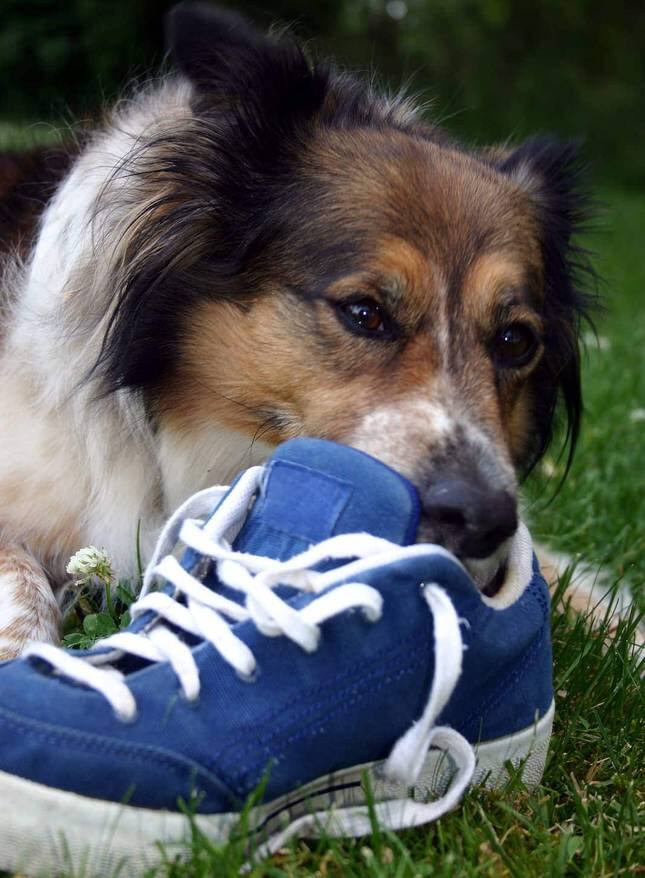
Chewing & Separation Anxiety?
The first thing you need to do is to figure out why your dog is engaging in destructive behavior. One common reason is separation anxiety. Most dogs will give you sad puppy eyes when you leave, but a dog with separation anxiety will go beyond a simple pout or whine when you leave him home alone.
A dog with separation anxiety may soil in the house or start destructive behaviors like tipping over the garbage can or ripping up his dog bed. He may even injure himself attempting to escape. Anxious dogs might also bark or drool excessively or refuse to eat or drink. Many pups with separation anxiety don't respond well to being crated. Consult your vet on ways to help your dog overcome separation anxiety.
Why Do Dogs Chew?
Boredom can be another culprit. Think about it: You are at work all day, and your dog is home, alone, just waiting for you to return. Think about how bored you'd be!
To combat his boredom, you can offer chew toys or toys that dispense food. Keep some out of reach so that you can surprise him with something novel, or break out his favorite chew toy just before you leave. Just like you might do for your cat, you can invest in a puzzle feeder that keeps your dog active and busy and gives you some peace of mind. Just make sure that his toys are filled with a daily portion of his healthy dog food instead of treats.
Finally, puppies who are teething frequently want to chew on something to relieve their pain. Plus, just like human babies, they want to put everything in their mouths. New textures! New tastes! New experiences! So much fun! To keep your pup from staring shamefacedly at a shredded slipper, make sure he has plenty of sturdy and age-appropriate chew toys and try not to leave him unsupervised for too long.
Advice to Chew On
How can you teach your pup not to chew? Crating your dog or designating a doggy-proof room are two options. You should start crate training when he is young if possible, and be consistent. However, make sure your energetic pup gets plenty of time to run around. You can also teach him a simple "drop it" or "leave it" command if he chews on anything other than his toys in front of you.


Tasty Tips
If you're away for long periods, consider hiring a dog walker or enrolling your pooch in doggy day care. These options keep your dog active and give him a social outlet when you're away, both of which will go a long way toward keeping you from coming home to find a new hole in your wall.
If nothing else works, you can try making an unpleasant-tasting deterrent spray to discourage your dog from chewing on specific objects (like his favorite chair leg). Cuteness suggests a mixture of white vinegar and lemon juice or apple cider vinegar. Never spray the deterrent on your dog's body, and keep up with his behavioral training to reinforce what you want him to learn.
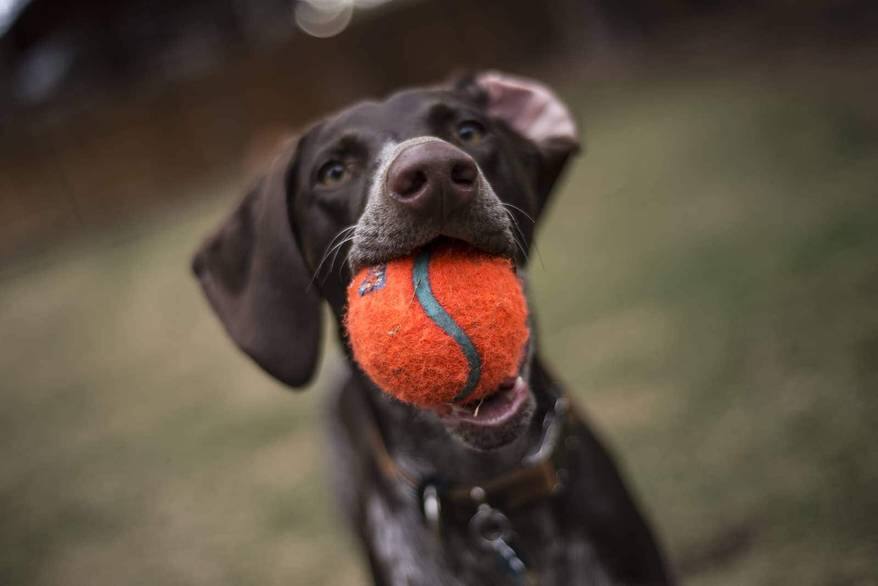
Tucker Him Out
The most important thing you can do to prevent destructive behavior is to give your dog lots of exercise and love! Keeping your dog well-exercised and giving him lots of social stimulation when you're home can go a long way to changing his behavior when you're not home. After all, who isn't ready to settle in for a long, quiet nap after a brisk walk in the neighborhood or a session of backyard fetch?
What you shouldn't do is discipline your dog after the fact. Your dog might act ashamed on your viral video, but really he's reacting to your tone of voice and mannerisms. Correcting your dog when you catch him in the act can help him learn, but telling him "no" hours after the fact won't help him connect the discipline with the destruction.
We know destructive dogs can cause havoc on a home. Consider why your canine pal is acting out, and give him some alternative options to let out his boundless energy.


Kara Murphy is a freelance writer and pet parent who lives in Erie, Pa. She has a goldendoodle named Maddie.
Related products

Hill's Science Diet Puppy Sensitive Stomach & Skin Salmon & Brown Rice Recipe
Gentle on stomachs while nourishing skin & supporting development in growing puppies

Hill's Science Diet Puppy No Corn, Wheat, Soy Chicken & Brown Rice Recipe
Supports healthy brain, eye, muscle, bone & immune system development in growing puppies

Hill's Science Diet Puppy Lamb Meal & Brown Rice Recipe
Vital nutrients to support 5 essential building blocks for lifelong health

Hill's Science Diet Adult Chicken & Barley Recipe Dog Food
Supports lean muscle and beautiful coat for adult dogs

Hill's Science Diet Adult 7+ Small & Mini Chicken & Brown Rice Recipe Dog Food
For the unique nutritional needs of mature Small & Mini dogs

Hill's Science Diet Adult Small & Mini Chicken & Barley Entrée Dog Food
Chicken & Barley recipe with precisely balanced nutrition to keep adult dogs active and healthy.

Hill's Science Diet Puppy Sensitive Stomach & Skin Salmon & Vegetable Stew
Gentle on stomachs while nourishing skin & supporting development in growing puppies

Hill's Science Diet Puppy Chicken & Barley Entrée
Chicken & barley entree with great taste and precisely balanced nutrition to support 5 essential building blocks for lifelong health

Hill's Science Diet Adult 7+ Chicken Meal, Barley & Rice Recipe Dog Food
Supports energy level and beautiful coat in mature dogs

Hill's Science Diet Puppy Small Bites Chicken & Brown Rice Recipe
Vital nutrients to support 5 essential building blocks for lifelong health

Hill's Science Diet Adult 7+ Beef & Barley Entrée Dog Food
Beef & Barley recipe with precisely balanced nutrition to support mobility and muscle mass for older dogs.

Hill's Science Diet Adult 6+ Large Breed Chicken Meal, Barley & Rice Recipe Dog Food
Supports energy level, joint health, and beautiful coat in large breed mature dogs

Hill's Science Diet Puppy Small & Mini Beef & Barley Entrée
Beef & Barley Entrée with great taste and precisely balanced nutrition to support 5 essential building blocks for lifelong health

Hill's Science Diet Puppy Savory Stew with Chicken & Vegetables
Chicken & Vegetables recipe with great taste and precisely balanced nutrition to help your puppy build immunity and strong bones

Hill's Science Diet Puppy Small & Mini Chicken & Brown Rice Recipe
Vital nutrients to support 5 essential building blocks for lifelong health, tailored for unique needs of Small and Mini puppies

Hill's Science Diet Puppy Small & Mini Chicken & Brown Rice Recipe
Vital nutrients to support 5 essential building blocks for lifelong health, tailored for unique needs of Small and Mini puppies

Hill's Science Diet Puppy Large Breed Lamb Meal & Brown Rice Recipe
Vital nutrients to support 5 essential building blocks for lifelong health

Hill's Science Diet Puppy Small & Mini Savory Stew with Chicken & Vegetables
A delicious complement to the nutrition of Science Diet Small & Mini dog food

Hill's Science Diet Puppy Lamb Meal & Brown Rice Recipe
Vital nutrients to support 5 essential building blocks for lifelong health

Hill's Science Diet Puppy Chicken & Brown Rice Recipe
Vital nutrients to support 5 essential building blocks for lifelong health
Related articles
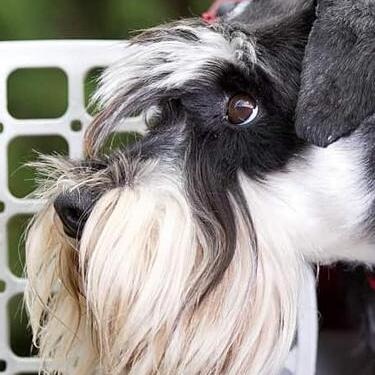
How to Choose the Right Size & Type of Dog Crate
Deciding the best crate size isn't always straightforward. Learn factors to consider when choosing the size & type to get, including your dog's age & size.
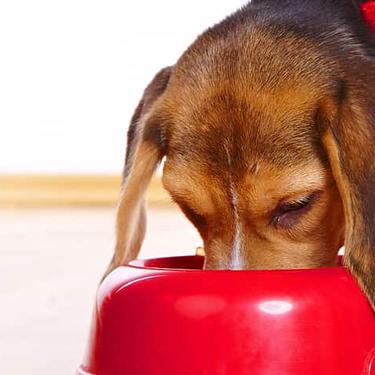
Best Dog Food: The Inside Scoop
Choosing the best food for your dog starts with choosing the right food for its needs. Learn about some of the things you should be considering.

Why Do Dogs Howl?
Learn some possible reasons for your dog's howling, which breeds are most active howlers, and some training tips for getting them to stop.

Dog Eye Boogers, Goop & Gunk: When Should You Be Concerned?
Learn about dog eye boogers, goop, gunk & crustiness: when it's normal vs. when it could be a health concern and which breeds & sizes are most susceptible.

Healthy Dog Treats You Can Make at Home
If you're looking for an easy way to create healthy, homemade dog treats for your dog, try one of these 2 recipes from Hill's Pet Nutrition.
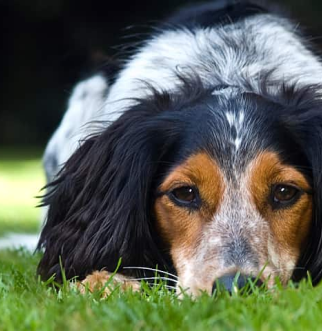
Dog Sprained Leg: Signs, Diagnosis and Treatment
Learn signs for recognizing a dog's sprained leg, how vets usually diagnose the condition, treatment options and how to help prevent sprains in the future.
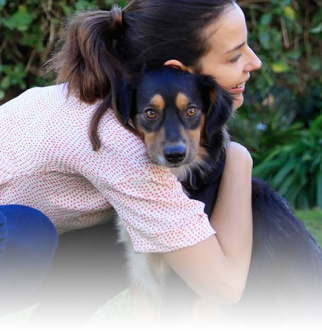
Why Does My Dog Eat Grass?
Your dog is a descendent of the mighty wolf, a noble hunter and confirmed carnivore. You feed him meals of the best possible quality, so why does he insist on eating grass?
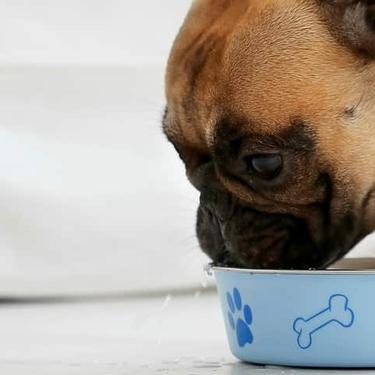
Can Dogs Eat Brown Rice?
Brown rice is a common ingredient in many human foods, but can your dog eat it? Learn the truth about brown rice and if it is actually good for your dog.

How to Tell If Your Dog Has an Upset Stomach & How to Treat It
Learn how to recognise if your dog has an upset stomach or sensitive stomach issues, how a veterinarian might treat it and how nutrition can help.
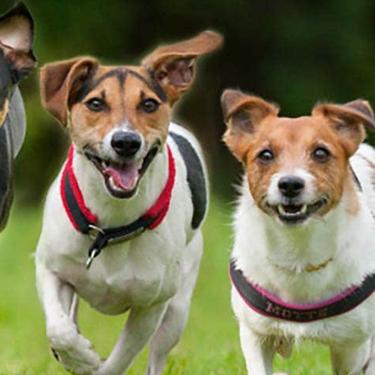
Caring For a Dog with Sensitive Skin
Learn how dogs with sensitive skin can have special dietary needs, how they can develop over time in a healthy dog, and how Hill's dog food can help.

Cancer in Dogs: Causes, Diagnosis & Treatments
Find out what causes cancer in dogs and the treatment options you have if your dog is diagnosed. Discover your options here.
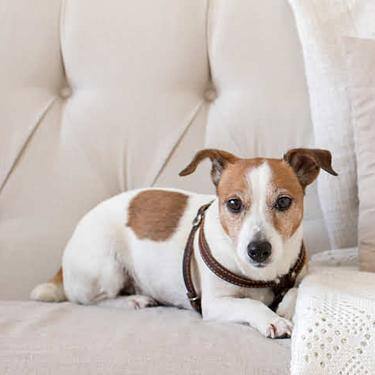
3 Steps to Prepare Your Apartment For a Dog
Learn tips to think about if you're considering a dog for apartment living, including ideal breeds/characteristics & how to make your space dog-friendly.
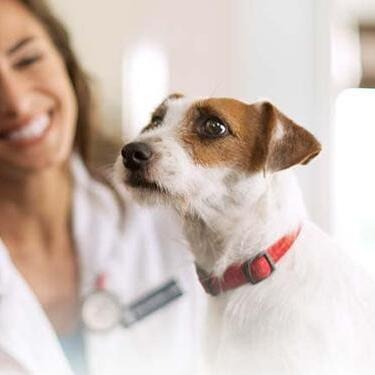
Taking your dog to the vet
Trips to the vet can be a challenge for dog owners. Read these tips to have a better vet visit for your dog, including transporting the dog with a carrier.
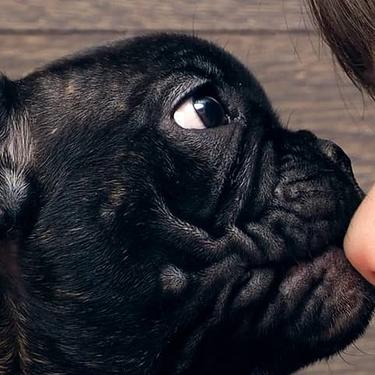
Which Dog Dry Nose Treatment Should You Use When?
If you notice your dog's nose is dry, discover some different causes and corresponding treatments to help keep his nose healthy.

Learn About the Best Dog Breeds for Children
Learn tips for choosing the best dog breed for your children and family, considering things like breed size, energy level, temperament and age.
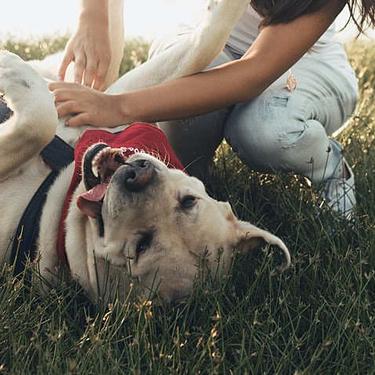
Can Dogs Be Ticklish? (& Where Are Their Spots?)
Learn whether your dog is ticklish, how to recognize if they are & which spots are most sensitive, as well as how to tell if they don't like being tickled.

My Dog is Acting Lethargic: Causes & How to Help
Discover reasons why your dog might be acting lethargic or not enjoying play & exercise like he used to, as well as when you should consult his vet.
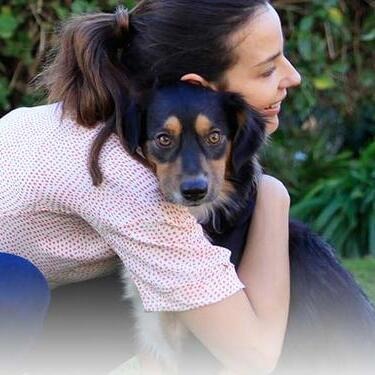
Dog Treats: What to Get & When to Give Them
Get information on Hill's Pet line of high quality dog treats designed to spoil your perfect dog without spoiling their appetite.

4 Puppy Training Hacks
When you first thought of adopting a dog, you expected puppy training to be a ton of fun. Here are some training tips to make sure it stays that way.
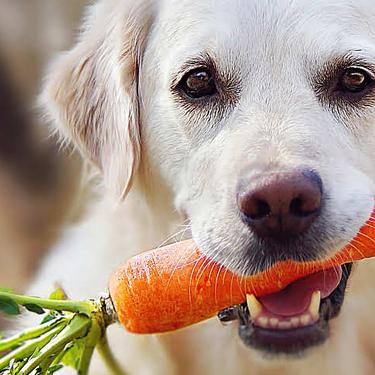
Are Carrots Good for Dogs? What You Need to Know
Learn whether carrots are good for your dog, ingredients in carrots that can provide health benefits, whether raw vs. cooked are a better option, and more.
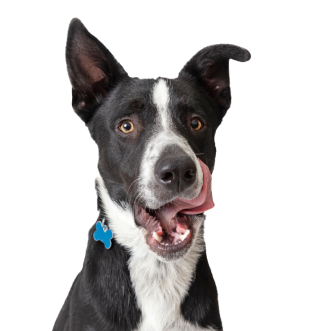
Put your dog on a diet without them knowing
Our low calorie formula helps you control your dog's weight. It's packed with high-quality protein for building lean muscles, and made with purposeful ingredients for a flavorful, nutritious meal. Clinically proven antioxidants, Vitamin C+E, help promote a healthy immune system.
Put your dog on a diet without them knowing
Our low calorie formula helps you control your dog's weight. It's packed with high-quality protein for building lean muscles, and made with purposeful ingredients for a flavorful, nutritious meal. Clinically proven antioxidants, Vitamin C+E, help promote a healthy immune system.
©2024 Hill's Pet Nutrition, Inc. As used herein, denotes registered trademark status in the U.S. only; registration status in other geographies may be different. Your use of this site is subject to the terms of our Legal Statement. About our Ads. Cookie Consent Tool
